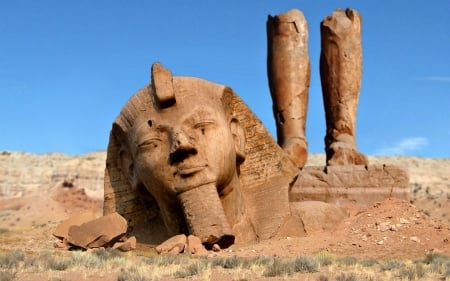Odds are low, but not zero. Still a bit of a nothingburger now that we’ve been able to successfully land probes on asteroids to sample their contents (and even send back video similar to images taken by Mars rovers). Strap a small thermonuclear warhead to an unmanned probe and redirect its trajectory - not a simple matter but entirely feasible.
Make a probe with a giant fuel tank and engine land on the asteroid then just fire away to push it slightly off target so it misses the planet. Don’t need to destroy just alter the trajectory a tiny bit.
You’re right, but the nuke is a good backup plan too. Beyond that, the UFO community has been saying for years that NHI’s explicitly told human leaders to never use nuclear weapons in space (or else), and I want to know if it’s true or not…
Unmanned? Nah, lets just assemble a team of oil drillers and send them up there like space cowboys.
It’ll be easier to teach drillers to fly shuttles than it would be to teach astronauts how to dig a hole.
Wouldn’t it be easier to train astronauts to drill?
Nah, you see this mission needs someone real smart. And when someone talks about smart people in smart professions, do you think about astronauts? No of course not. (Unless they are really really old astronauts, like geriatric, then yes.) instead you think about rough necks. That’s right, you think of guys who drill holes in the ground.
Don’t even need a warhead. The Double Asteroid Redirect Test (DART) just threw the probe itself at an asteroid hard enough to affect its orbit.
Wtf, no, the way to deflect an asteroid is to send something near it while it’s far away. Blowing it up just risks another smaller asteroid hitting us. Small changes in direction while incredibly fast away will change its path enough to be safe.
Holdup, your user avatar can be a GIF too?!
I have no idea, I had this on my computer so I uploaded it and it works. It works on some front ends and apps and not on others. I was just happy with the magic and used it!
Outside of extremely extenuating circumstances, this isn’t a worry. We already have proof-of-concept tech like DART to divert asteroids, aerospace engineers can use this to get governments to fund them even better, asteroid goes behind the sun for 3 years, asteroid diverting technology advances even further, in 2028 when the path of travel becomes more precise the chance of hitting us gets revised down to zero, and we’ve advanced our technology should anything more serious come our way in the future
yeah, we really don’t have to worry.
With the DART mission tech, we can get our hit chances into the 90 percents
Gotta pump those numbers up
@OneTwoThree @fossilesque actually we want this asteroid to hit Earth. Remove one threat from the sky. Divert to hit in a safe place. This one is safe if it hit in a remote location.
Backup is that we have a team of deep sea oil drillers go up there
Why are we trying our best idea second?
I begin to worry when I see this asteroid still in the sky and how it becomes gradually bigger
The sad thing is that according to Scott Manley video the areas it can hit are equatorial Africa or South of India, so lot of countries will try to ignore it
Until those countries start planning a meteor re route, which if done improperly could push the impact zone anywhere.
india: nudges the asteroid a bit
china: “yo, wtf”
asteroid path now 100% chance of impact on Yellowstone
Triggering an eruption of the supervolcano, whose ash will kill most people in the US and blot out the sun for years
The millennial dream
Only if it brings down housing prices.
I won’t believe it’s gonna miss us until it gets to 95% likely it will hit
I see another one branded by XCOM.
I find the XCOM comparisons funny because the game actually tilts the RNG in the player’s favor and people still think it’s unfair
https://www.giantbomb.com/xcom-2/3030-49817/forums/xcom-2-is-un-fair-1792143/
I don’t think it’s unfair, it’s just that being one square away with 99% accuracy missing always feels like bullshit, regardless of whatever explanation you give.
Jup! I think in the highest difficulty they actually have the correct percentages implemented.
So what level of calamity are we talking about here? 3% doesn’t sound that low to me.
Well we wouldn’t have to worry about global warming anymore
This size meteor would destroy a city but not have lasting planet-scale effects. Think Tonguska event.
Yes we would? This isnt a planet killer. Its a city killer. Plus theyll know where itll hit and can evacuate the area before hand. There is no reason a single person should die from this rock unless someone does something stupid.
They arent 100% sure on the size but itll be a regional disaster. Few hundred square miles of destruction. And theyll be able to evacuate the area before hand. Itll land somewhere between south america and india theres a line map you can find of the area that could be hit and thatll get narrowed down as time goes on. We will know where its gonna hit far in advance if it does hit.
If it is on a collision course we probably have time to do something about it. If we don’t do anything about it it’ll probably hit the ocean and it’s not big enough to cause any kind of crazy mega tsunami or anything like that. If it does hit land it’ll probably hit in the middle of nowhere and kill, like, 12 people, and if it does manage to beat all the odds and hit a major city it will be a major disaster, but it’s not going to be the apocalypse or anything.
I recall hearing it was medium-ish nuclear weapon sized, but not wipe out civilisation size. Wherever it’s heading would need to be evacuated.
That was a week ago, though, and I’m sure the size projections will be updated as we get more data.
We’ll get a better idea of whether it’ll hit or not in 2028 the next time it passes close to earth, which will give us plenty of time to respond before it might hit in 2032.
Except that 2028 would also be our window to do something about it before it disappears back into space. There needs to be a plan now, even if that plan is to wait and see where it’s going to hit.
In short, we already have a plan. DART proved that we can do it, and off-the-shelf rockets like the Falcon 9 have plenty of performance. All that remains is to wait until early 2028 when we get a proper fix on the asteroid, then we’ve got 7 or 8 months to prep and launch a mission before the window of opportunity closes.
4 years to develop an effective anti-asteroid response?
Well, yeah. Deflecting an impact that’s scheduled 4 years in the future wouldn’t take much force and the DART mission proved that it’s achievable. We can just do that again in the months between when the asteroid comes back around and when it flies past us.
I think the DART mission picked a target of some convenience. This is no arbitrary target - it picked us. The stakes are a lot higher if failure is not an option. And of course, the world is currently tearing itself apart, so that won’t help when the moment for unity and collaboration approaches.
You’re not wrong, but something like this is well within the capabilities of private companies like ArianeSpace or SpaceX. Also, the stakes are just a city-killer asteroid, failure is entirely an option when there’s plenty of time to evacuate the impact zone.
This is correct. Current estimates place a possible impact event at an energy release of ~7.8 Megatons of TNT. Approximately 500 times the bomb dropped on Hiroshima. Comparable to the Tunguska Event. This is accounting for current size estimates under 100m in diameter.
It is a very serious asteroid. The Tunguska Event could have killed millions of people. The primary reason it didn’t was because it happened in the middle of Siberia. The primary witnesses to the devastation were local native groups who still lived that for out, of which there were few. It wasn’t properly investigated for over a decade because of the remoteness of where it happened and the low priority as it didn’t affect very many people. If that happened over a major city the consequences would be utterly devastating.
It’s not K-T Extinction event level, but it is nonetheless quite serious.
Some examples of very enjoyable related media that are not Don’t Look Up include The Last Policeman book trilogy and the Netflix animated series Carol & the End of the World.
(There’s nothing wrong with Don’t Look Up, but it’s the only recommendation I ever see.)
Thankfully I live in the USA where we’re totally safe because we reject science! But don’t you try coming here for safety, we hate everybody else. You’ll probably just be sent to gitmo.
Just don’t look up, duh
Chances it’ll hit went back down if anyone is worried
https://www.nbcnews.com/science/space/asteroid-hit-earth-why-chances-keep-changing-rcna192723
Don’t give me hope
Revised down to 0.27%
Just when it was getting good too! One of these days…
With more data collected over time, the chance has already been reduced to 0.28% https://blogs.nasa.gov/planetarydefense/2025/02/20/additional-observations-continue-to-reduce-chance-of-asteroid-impact-in-2032/
deleted by creator
yeah, yeah it is
deleted by creator
Its not nearly big enough to wipe out the planet. Not even close.
It would just cause suffering for thousands/hundreds of thousands of people. Are you OK with that?
Yeah, because at best it just splashes in the ocean, worst it hits a city and causes mass suffering as thousands die from the impact and fallout. It’s not going to end any suffering
Yes, because it’s not going to be nearly as catastrophic as it sounds. What we need is a real world ender.
deleted by creator
Sometimes hope is all we’ve got.
Alabamans are still marrying their cousins.
I can’t blame them, their cousins are hot.
What are you talking about Shelbyville, why would we want to marry our cousins?
Yes! Eat all of our shorts!
Risk is probability times consequence. Focusing on the odds without considering the second half of the equation is stupid.


















